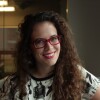After Tamar Bresge was diagnosed with retinitis pigmentosa at age 15, her entrepreneurial father made it his mission to help find a cure.
Pictured: Paul Bresge/Nicole Bean for Biospace
For Paul Bresge, getting into biotech wasn’t fulfilling a career goal. It was fulfilling a promise.
One of his daughters, Tamar, was diagnosed with retinitis pigmentosa in 2010 at the age of 15, when the family was living in Toronto.
“We were basically told—in the whole span of . . . maybe two or three minutes—‘You’re going blind, there’s nothing that can be done to save your vision, here is a handbook to the Canadian National Institute for the Blind,’” he said. “That was a real pivotal moment for all of us, particularly her.”
It was then that he made a promise to Tamar.
“The day of her diagnosis, I just wanted her to go on with her life and do everything that she wanted to do and imagined she was going to do before the diagnosis,” he said. “Her responsibility was to take care of herself and do everything that she wanted. And my responsibility was to find a treatment or a cure for her.”
Bresge, now the CEO of San Francisco–based biotech Ray Therapeutics, said he was fortunate in that he could do what every parent who receives a serious diagnosis for their child wants to do: something about it.
Retinitis pigmentosa is a rare, degenerative eye disorder in which people’s vision slowly deteriorates, often causing blindness by middle age. After Tamar’s diagnosis, Bresge began reading all the latest research around treatments for the disease. Cell therapy studies conducted at the University of California, Irvine, under husband and wife duo Henry Klassen and Jing Yang caught his attention.
“They had really interesting proof of concept of data in mice,” Bresge said.
Although he didn’t have a background in biotech, he had worked in generic pharmaceutical and cosmetic manufacturing and operations in the past, and he always felt that he had an entrepreneurial spirit.
“I brought in some people who I considered to be really knowledgeable in evaluating science, and we all agreed that there was an enormous amount of potential for this program,” he said. “Although it was really early science in a very much emerging field, it really seemed to differentiate itself from everything else that I had seen.”
That led to the formation of jCyte, which Bresge cofounded in 2012 and led. The company’s principal technology, jCell, is a minimally invasive injection for retinitis pigmentosa designed to be easily administered at a doctor’s office. Injected stem cells release neurotrophic factors that have been shown to reduce photoreceptor cell death and boost the function of surviving photoreceptors. Today, the company is about to start a Phase III study in partnership with Santen Pharmaceuticals.
But at the end of 2020, Bresge left jCyte. “Patients who don’t have any photoreceptors will likely not benefit from the [jCell] therapy, which makes sense when you think about the mechanism of action,” he explained. “So, after we completed the deal with Santen and the company had the funding to go into the Phase III program and a really strong partner, I took a look at what would be the most complementary way to continue my mission for patients with blinding diseases.”
With that goal in mind, Bresge again read about a new technology that seemed promising. This time the work, from the lab of Wayne State University School of Medicine researcher Zhuo-Hua Pan, focused on optogenetic therapies. In this approach, a gene for a light-sensitive protein is delivered to cells in the eye, enabling them to sense light.
A little over a month after leaving jCyte, Bresge helped to found Ray Therapeutics, which aims to develop an optogenetic therapy for retinitis pigmentosa and other forms of retinal blindness. Ray successfully raised $100 million in its series A in May 2023, despite last year’s tough investing environment. Bresge attributes part of that success to the fact that the company should be able to see efficacy within a couple of months of dosing patients.
“We’ll be able to see efficacy really quickly, because we’re not looking to slow down the progression of disease; we’re looking to restore vision, and we’re going for really binary end points like vision acuity and contrast sensitivity or mobility; like the ability to navigate in different luminous levels of light,” he said.
Bresge’s biggest inspiration remains his daughter. After getting such a devastating diagnosis at 15, she studied to become an artist, earning a master’s in visual arts from Tufts University.
“She’s just gone on and done everything with her life that she wanted to do, irrespective of what she was told,” he said. “For the whole family, it just changed the trajectory of all of our lives. I never thought about it as getting into biotech. . . . It became an absolute mission just to try to find a cure or a treatment.”
Mollie Barnes is a freelance science writer based in Los Angeles. Reach her at mollie@100yearsco.com. Follow her on Threads and Instagram @shejustlikedtogo and see more of her work at molliebarnes.contently.com.
Correction (Feb. 1): This article originally stated that Bresge helped found Ray Therapeutics a little over a year after leaving jCyte; in fact, it was a little over a month. BioSpace regrets the error.






